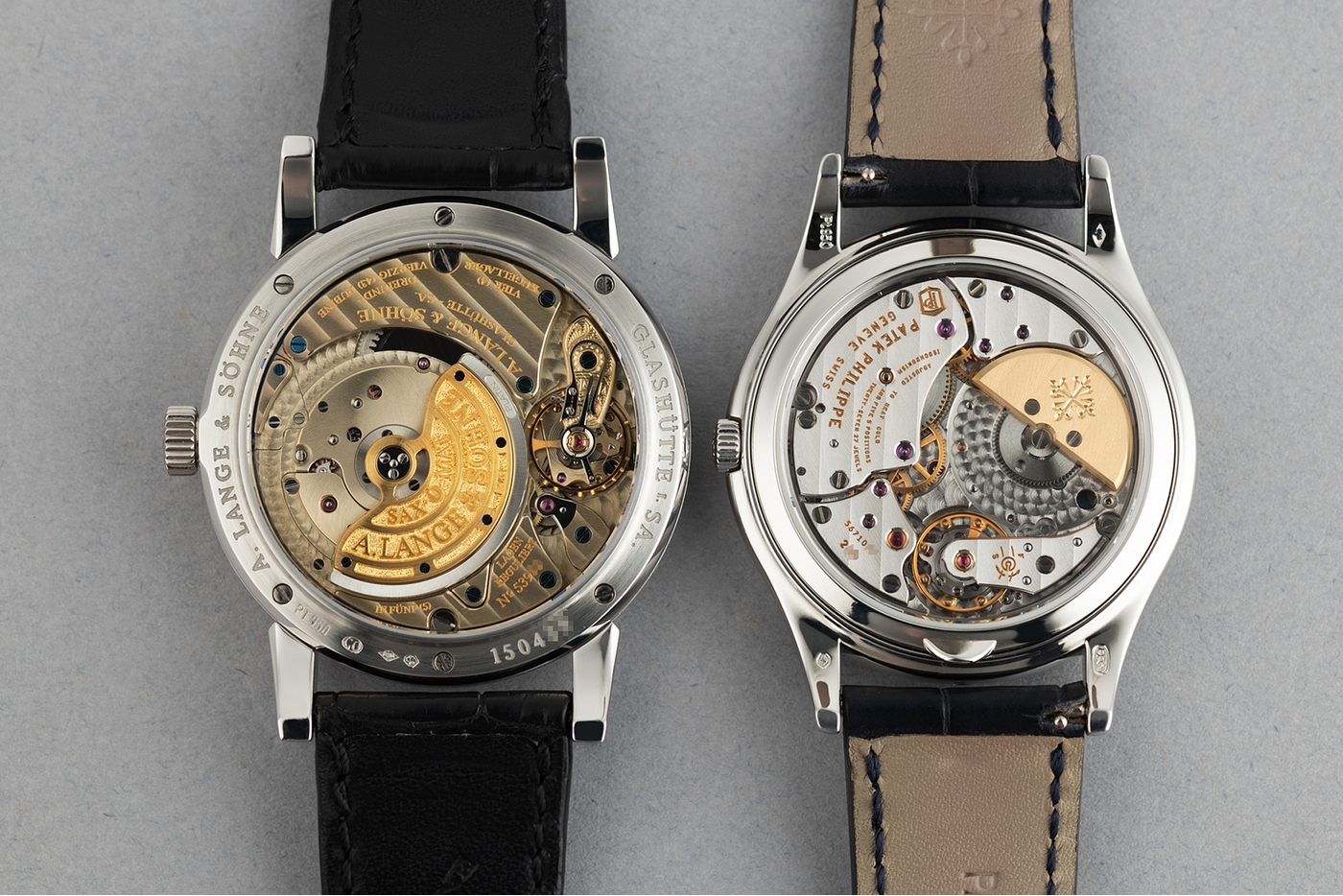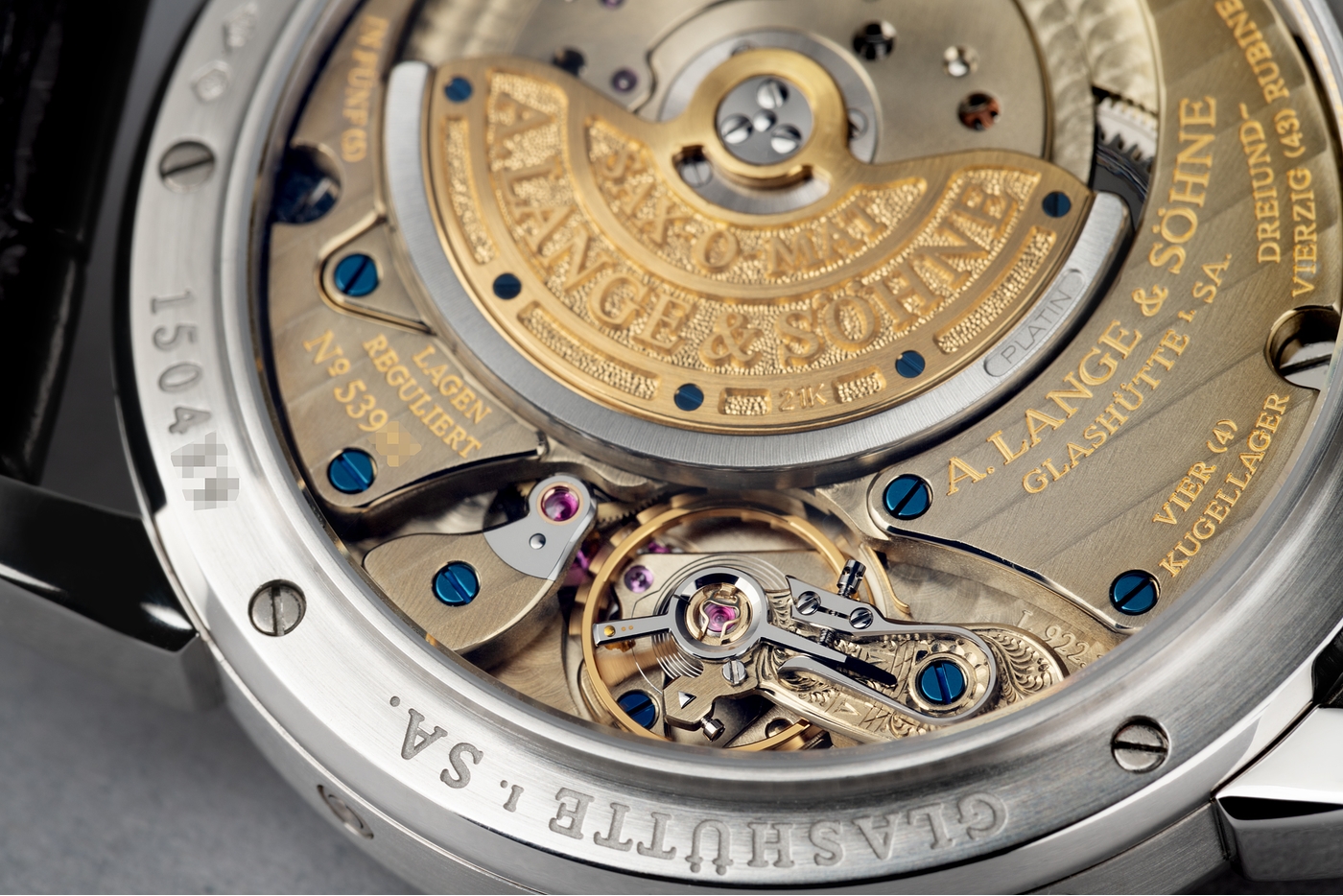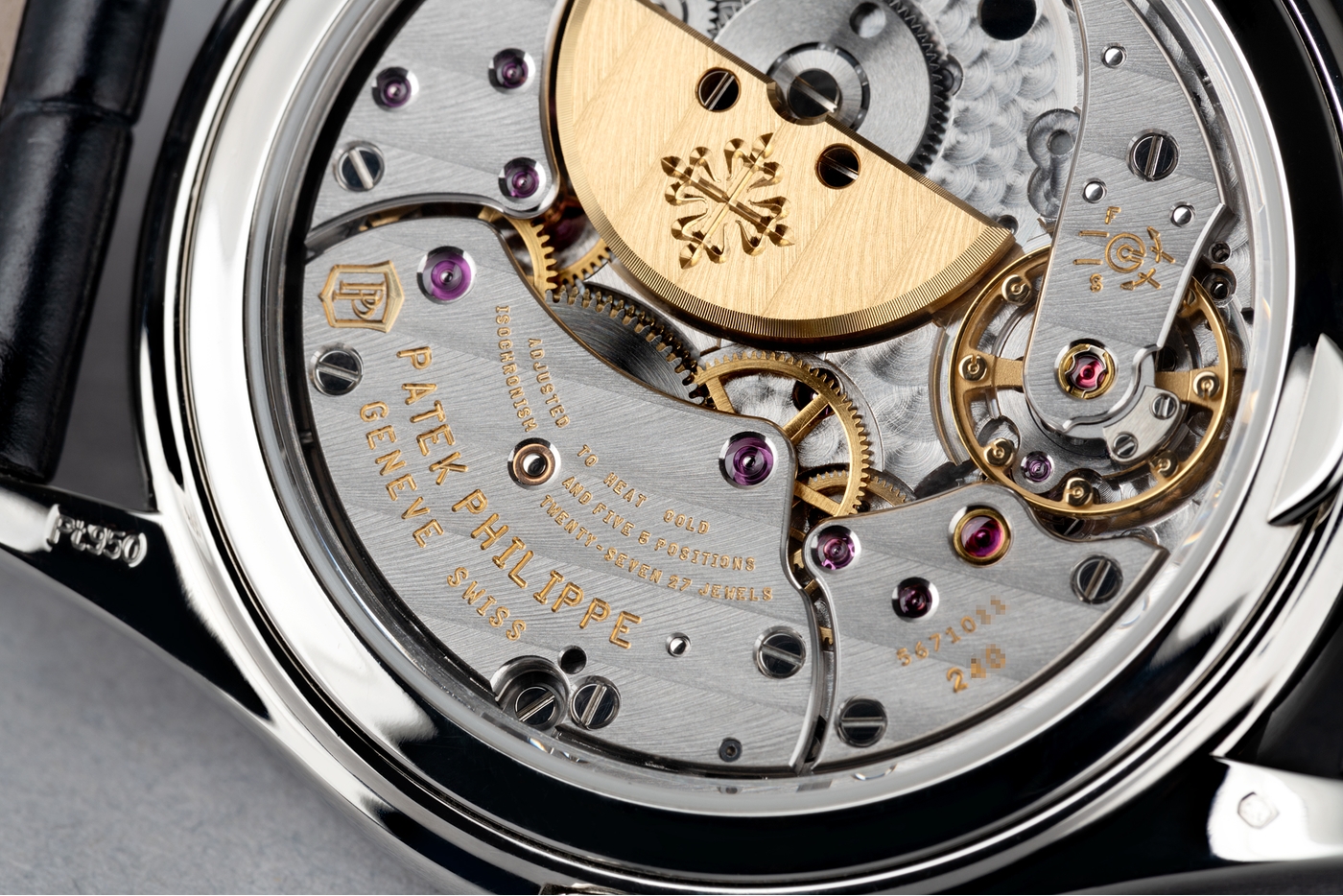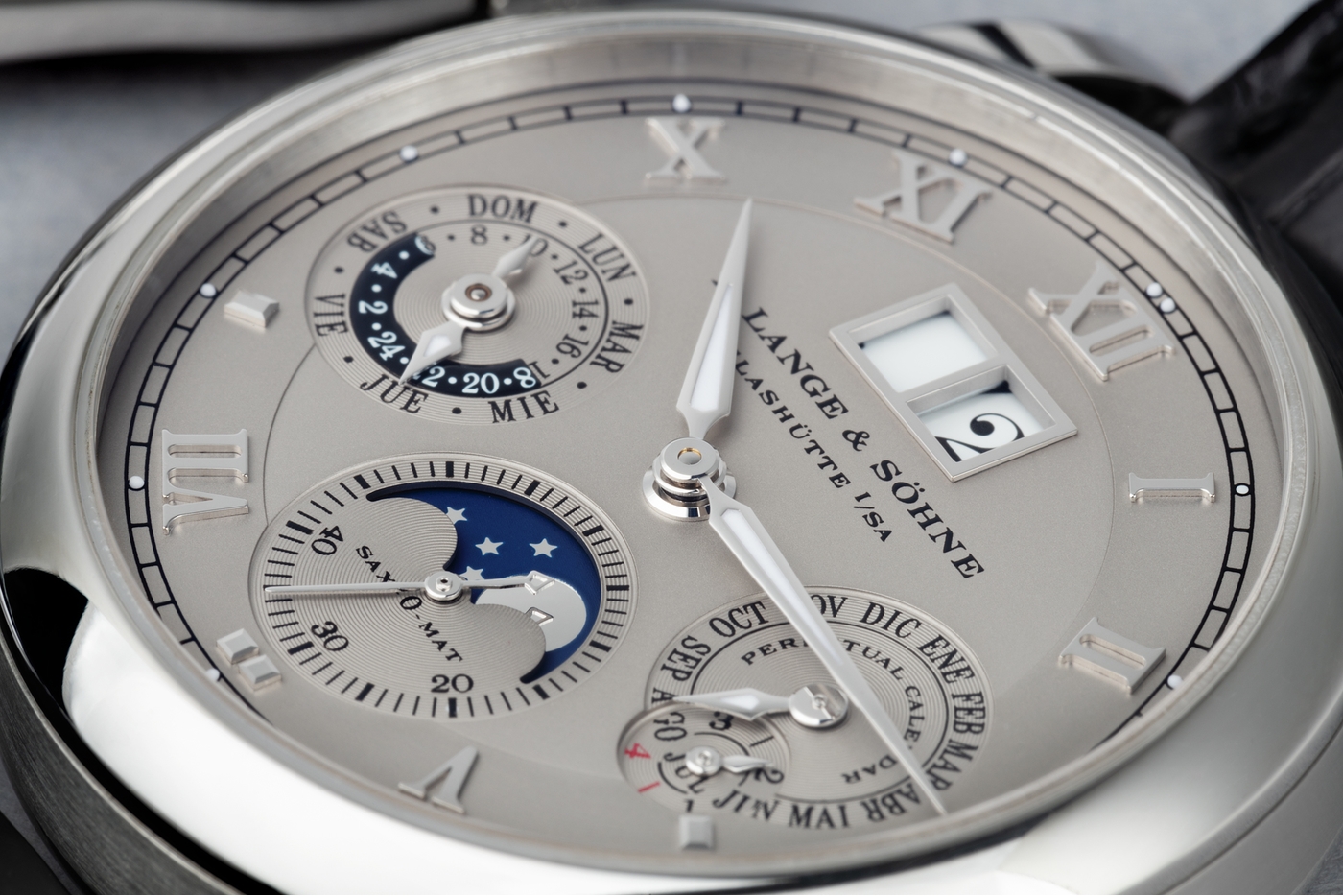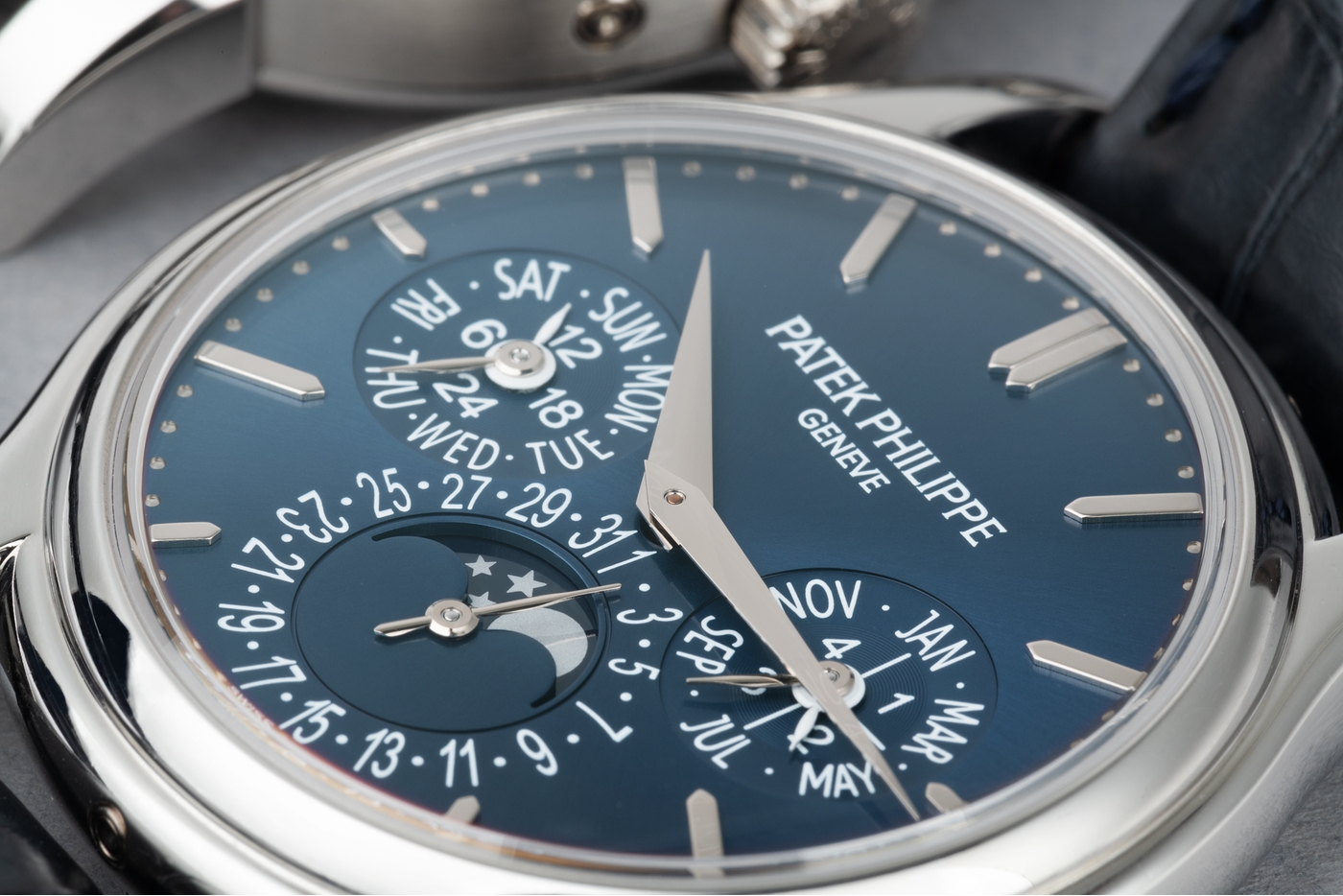A Quick Head to Head: Two Platinum Perpetuals
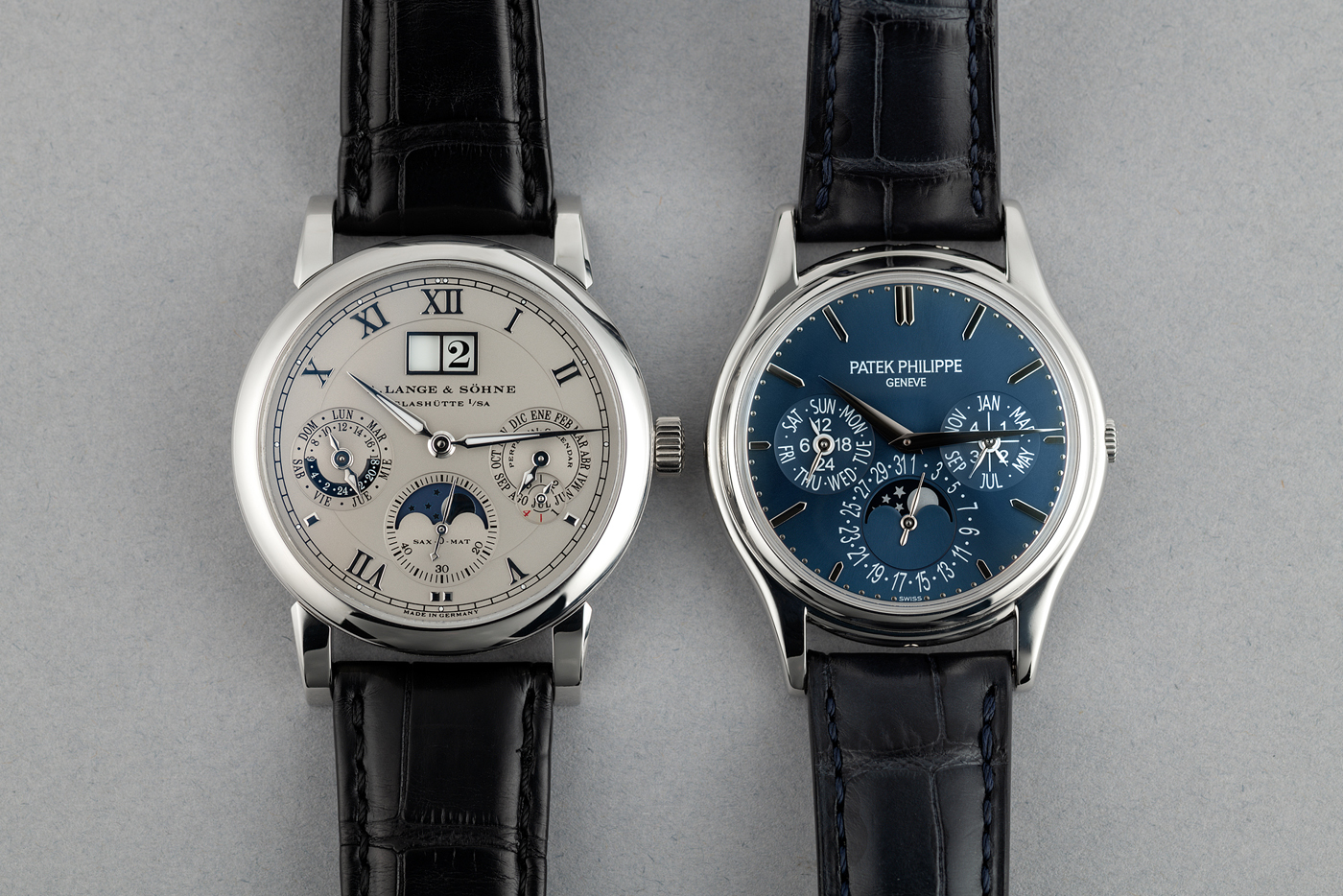
Side by side, the difference in design language between the two brands is immediately obvious. Every part of the Lange speaks of strength, solidity and legibility, even though it measures just 1.5mm more than the Patek, it appears far more massive in every way. The crisp recesses in the gently frosted dial gives the impression of a generous slab of solid silver, that is matched by the straight-sided platinum case and no-nonsense broad bezel.
By contrast, Patek have taken a far softer approach throughout the construction of the 5140P. Looking at the watch straight on, it is hard to detect a single flat surface, everything, from the gently domed sapphire glass, dauphine hands and saucer-like sub-dials seems to exhibit subtle curves. Clearly this is a design meant for discretion. The gentle lines of the case and lugs will slip under a cuff with ease and no part of the watch seems to shout for attention, except of course, that deep blue subtly brushed dial and little secret flourish of a diamond in the case at 6.
With two horological heavyweights like these, there are a lot of fireworks and fun to be had around the back too. Both have incredibly beautiful movements with all the perfect chamfers, stripes and perlage you’d expect. Looking closer though, we see the same fundamental differences in the movements that we identified in the case and dial designs.
Lange’s calibre L922.1 is crafted in solid German silver with its famously warm, raw finish, the thick plates and bridges reassuringly screwed into place with big, bold, blued steel screws and the wheels of the going train tucked away out of sight. The balance and escape wheels are even afforded their own bridges (one of which is beautifully engraved), whilst the ¾ size winding rotor is engraved in such a way as to exaggerate its apparent mass, looking for all the world like it’s as thick as an old doubloon and trimmed with a platinum outer wing to afford even more inertia. Finally, one of Lange’s signature moves, and a reminder that this movement is about precision engineering first and foremost, is the inclusion of a gorgeous, black-polished, swans neck regulator allowing fine adjustment of the balances rate.
Contrast this with the Patek 240 Q with its bright, fresh rhodium plated plates that make the claret red jewels pop and showcase the warmth of the playfully exposed brass wheels. Combined with the wafer thin plates, and petite micro-rotor this adds up to a light, airy feel that appears more about carefree simplicity than rugged, precision engineering.
The dial details are important here too, the long slim luminous hands of the Lange meet a crisply painted minute track that is clearly designed for absolute precision measurements, echoed by the smart “zero-reset” mechanism on the running seconds hand at 6 o’clock that allows you to set the watch to a precise time signal. For Patek, elegance was prioritised here, eschewing the seconds hand all together and using broad dauphine hands that taper and curve beautifully towards recessed individual minute markers. Interestingly, the most important part of a perpetual calendar is where the two watch-houses differ most in their approach, the date display. Patek have opted for discreet date numerals around the moonphase sub-dial whereas Lange have gone for all-out clarity with its large, individually framed, double date windows at 12 that are sure to never be mistaken.

